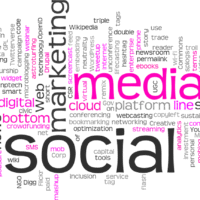As of 2024, Houston, Texas, continues to solidify its reputation as one of the fastest-growing cities in the United States. Known for its diverse culture, economic opportunities, and vibrant communities, Houston’s population is projected to reach approximately 2.4 million residents, making it the fourth largest city in the country, following New York City, Los Angeles, and Chicago.
Population Growth Trends
Houston’s population growth has been fueled by a combination of factors, including a strong job market, an influx of immigrants, and a relatively low cost of living compared to other major metropolitan areas. Over the past decade, the city has experienced significant population increases, driven largely by its booming energy sector, healthcare industry, and burgeoning technology scene. The Houston metropolitan area, which includes surrounding suburbs and towns, has seen even more substantial growth, with a total population exceeding 7 million.
Demographics and Diversity
One of Houston’s defining characteristics is its incredible diversity. The city is home to a wide range of ethnic and cultural communities, with approximately 45% of the population identifying as Hispanic or Latino, 23% as Black or African American, 6% as Asian, and a growing number of residents identifying as multiracial. This melting pot of cultures contributes to the city’s rich tapestry, evident in its culinary scene, festivals, and community events.
As of 2024, the city continues to attract a young, dynamic population, with a median age of around 33 years. This youthful demographic is essential for driving innovation and growth in various sectors, particularly technology and healthcare.
Economic Opportunities
Houston’s economy is one of the largest in the United States, primarily driven by the energy sector, particularly oil and gas. However, in recent years, the city has diversified its economic base, with significant growth in healthcare, aerospace, and technology. Major institutions like the Texas Medical Center, one of the largest medical complexes in the world, continue to attract talent and residents.
The availability of jobs and the potential for career advancement are significant draws for newcomers. The city’s low unemployment rate and business-friendly environment have made it a prime destination for professionals seeking new opportunities.
Housing and Infrastructure
As Houston’s population continues to grow, the demand for housing has increased. The city offers a mix of affordable housing options, suburban developments, and luxury apartments, catering to a wide range of income levels. However, with rapid growth comes challenges related to infrastructure, transportation, and urban planning.
Local government and city planners are working to enhance public transportation options, improve roadways, and develop community resources to accommodate the growing population. Projects like the expansion of light rail systems and increased bike lanes are part of ongoing efforts to create a more connected and accessible city.
Education and Community
Houston is home to a number of prestigious educational institutions, including Rice University, the University of Houston, and Texas Southern University. These institutions not only contribute to the local economy but also play a vital role in attracting students and families to the area.
Community organizations and cultural institutions, including the Museum District and the Houston Livestock Show and Rodeo, provide residents with enriching experiences and foster a sense of community pride.
Conclusion
In 2024, Houston’s population continues to grow, reflecting the city’s dynamic economy, cultural diversity, and quality of life. As it evolves, Houston is poised to maintain its status as a thriving metropolis, attracting new residents and businesses while facing the challenges that come with rapid urban growth. The city’s future looks bright, promising opportunities for all who choose to call it home.











